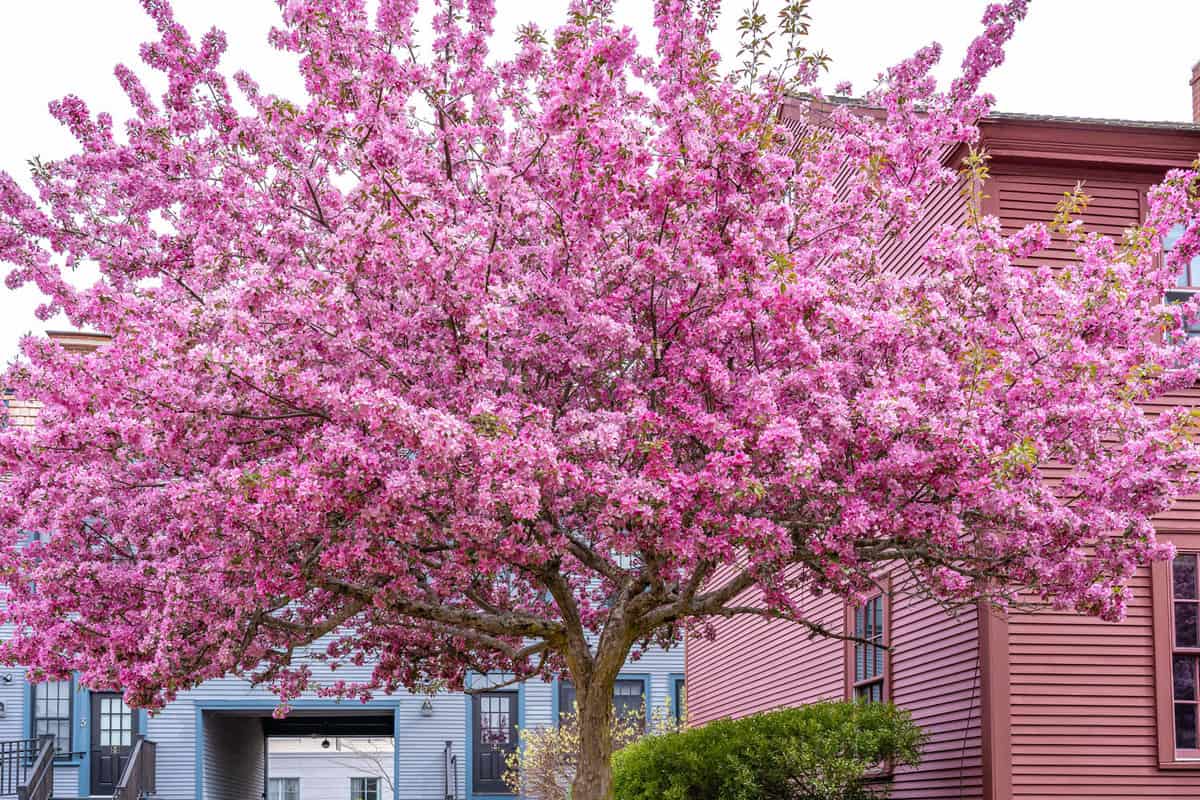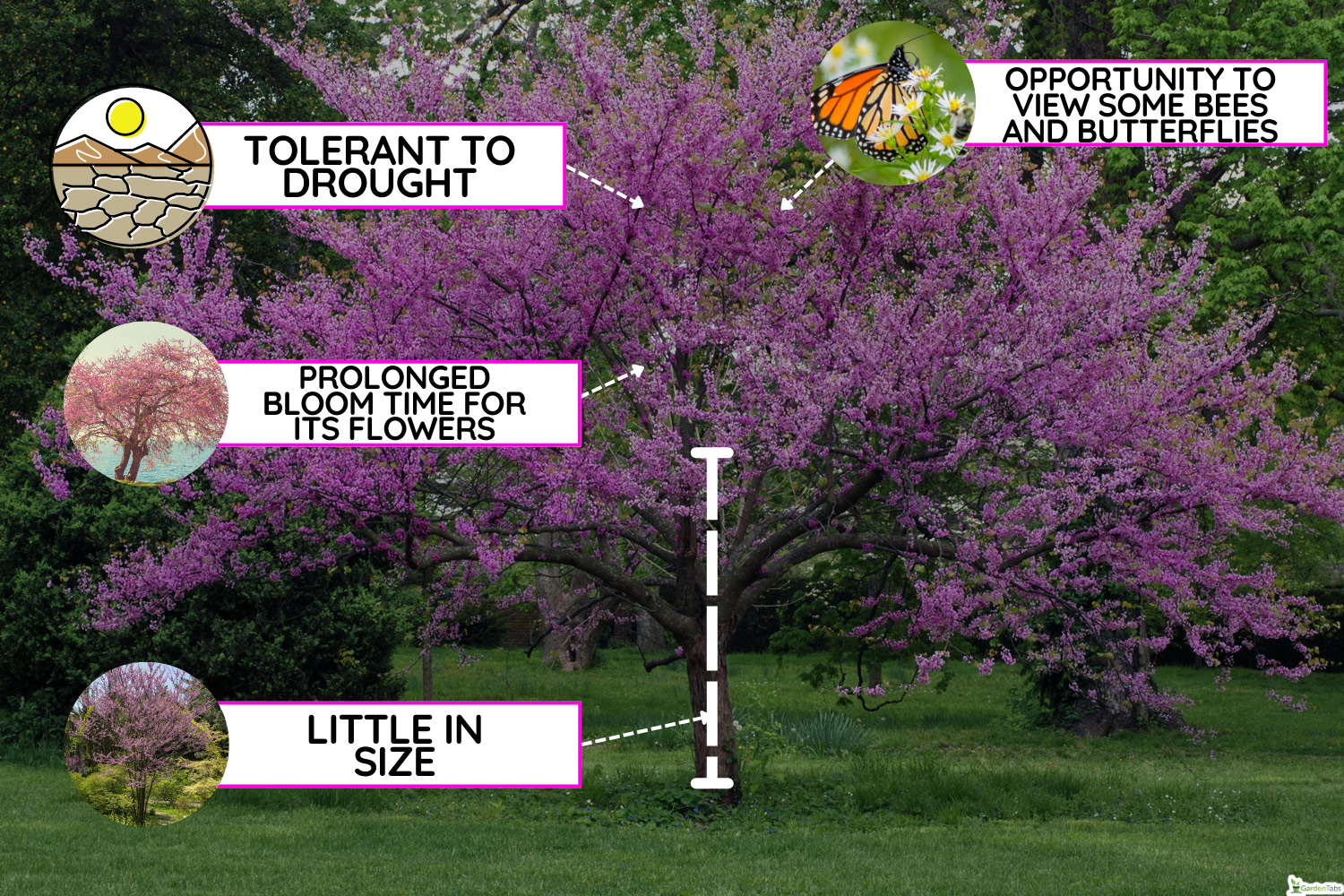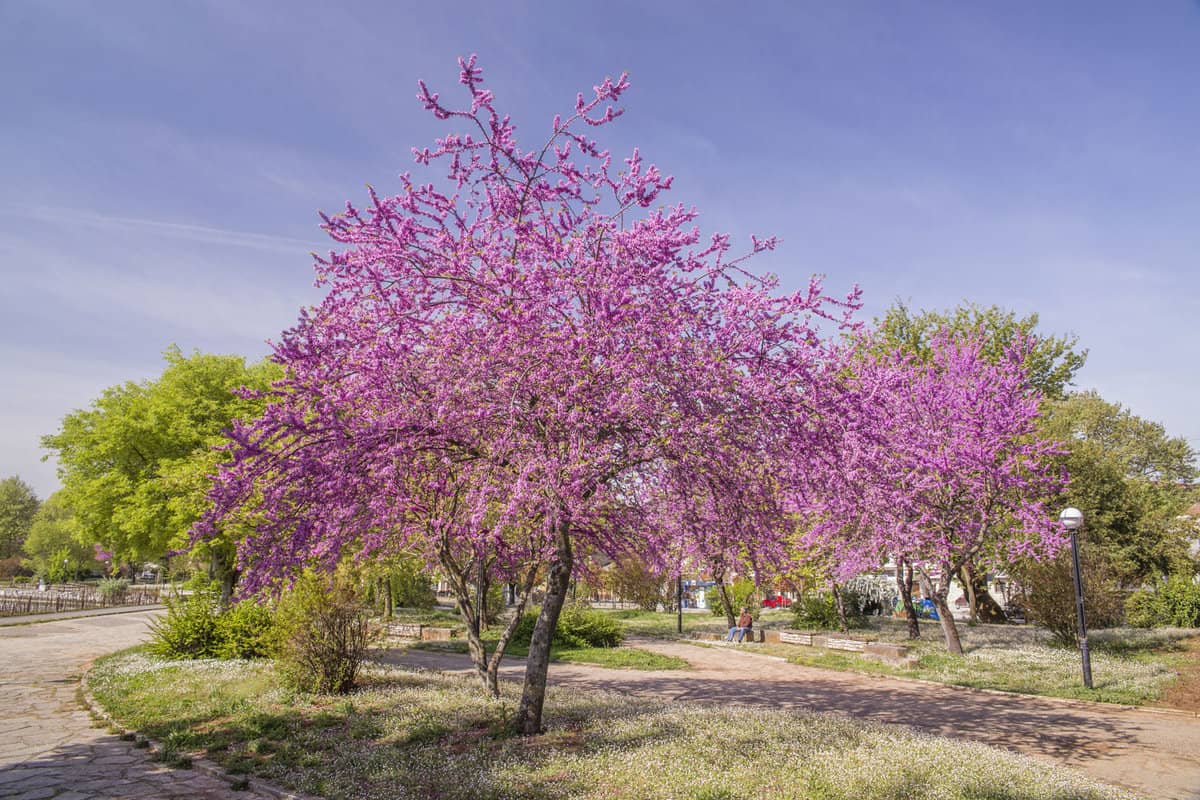This article was reviewed by Steve Snedeker, professional landscaper.
Eastern redbud trees are highly esteemed for their vibrant leaves. These decorative trees require minimal maintenance and are popular in home garden design. But are eastern redbud trees messy? We conducted extensive research to provide you with an accurate answer.
Due to yearly leaf-shedding, an eastern redbud tree can be untidy. This means that you need to dredge up the leaves annually once they fall off the tree. An eastern redbud tree also has seed pods that fall to the ground but don't make much of a mess. Pruning during the blossoming season is a quick and easy solution to maintain the tree's shape and tidying the area around it.
Eastern redbud trees are popular in naturalized or woodland areas as shrub borders. This tree is showy and beneficial to wildlife but doesn't grow overly large, making it an excellent landscaping tree to grow near your home. Continue reading for more information on the eastern redbud tree.
The Eastern Redbud Tree
Since eastern redbud trees are native to North America, they make excellent decorative trees.
Its blossoms provide beauty all year round that does not require continuous trimming. They draw pollinators such as honeybees or butterflies. They can grow in partial shade, but full sun is ideal for their growth.

The deciduous eastern redbud tree is recognized because of its vivid and impressive blossoms.
Some varieties feature white flowers, but most possess fuchsia, purple, or soft pink flowers. The tree blooms in the spring and has rich green foliage throughout the summertime. In the fall, the foliage turns amber or yellow.
These trees are medium to modest in size. They grow slowly, typically reaching 10 feet within the first five years following planting.
They grow to a height of 20 to 30 feet once fully grown, with branches typically 20 feet wide. This well-liked decorative tree can enhance gardening with vivid colors.
The Benefits Of The Eastern Redbud Tree

There are benefits and drawbacks to eastern redbud trees. The benefits include that the tree requires little upkeep, is resistant to drought, and is attractive.
You ought to be informed about the advantages and drawbacks of growing an eastern redbud tree before deciding to do so on your property. This will be helpful in the long run.
Eastern redbud trees are not high-maintenance, so you are not required to watch over them daily. Read below for more information about the benefits of the eastern redbud tree:
Tolerant to Drought
They are excellent for drought-tolerant plants since they endure drought quite well. Normally, the plant only develops over springtime and stops growing during other seasons.
Eastern redbud trees may survive without water when they reach a certain age.
People who live in dry regions or areas with water scarcity would benefit significantly from this. The drought won't kill your eastern redbud tree, keeping your garden from looking bare.
Prolonged Bloom Time For Its Flowers

These trees bloom earlier throughout the calendar year and continue to do so through the end of the season.
Its greatest flowering period typically lasts from April through May, although considering how hot the weather is that year, they may continue to bloom throughout June or even July.
Little In Size
These trees can be planted in tight spaces wherein bigger shade trees wouldn't fit well because of their modest shape and size. One of its obvious advantages is that eastern redbud trees rarely read to cabling or electric lines above them.
Aesthetically Pleasing
The tiny flowers give the landscape a touch of magenta and provide a wonderful background for smaller plants that flower before the tree. They also offer considerable shade all year long without competing with other plants in your landscaping layout.
The lovely heart-shaped leaves turn an intense yellow or orange during autumn. No matter what time of year you plant them, redbuds are a terrific way to give brightness to any garden.
Opportunity To View Some Bees And Butterflies
Bees and butterflies are drawn to eastern redbud trees since of their stunning colors. This means you'll also be doing your part in balancing your garden's ecosystem.
Drawbacks Of Eastern Redbud Trees

Eastern Redbuds are easier to maintain in the spring than in the fall, as some work is required to clean up their shedding leaves as the weather turns cold.
This tree is also prone to some insects and illnesses. In addition to having a brief lifespan, they also need a large amount of water while growing.
Below is a comprehensive list of the various drawbacks of eastern redbud trees.
Eastern Redbud Trees Only Sprout In The Spring
Redbuds usually only flower once throughout each growing season, except for the southernmost portion of their global distribution, where they may bloom twice with just enough water. They could delay flowering until spring has officially arrived because of cold weather.
Likely, your trees won't flower once more until the following growing period if it fails to do so between February and May. Additionally, since maintenance tasks can be time-consuming, you must be prepared to handle them independently.
Danger Of Insects
Redbuds often resist illness and pests, but insects or animals may devour the foliage if plants do not get water. Likely, your tree isn't getting sufficient watering if it appears unwell and has some yellowing on its leaves.
Additionally, they draw pests like aphids, which can occasionally become bothersome, particularly for people allergic to such things.
They Require Excessive Water
Water is essential for redbuds, particularly in the initial year as they establish themselves. To safeguard the health of the eastern redbud tree, ensure you frequently provide it with sufficient availability of fresh, safe water if you decide to plant them.
Maintaining An Eastern Redbud Tree

The eastern redbud tree requires little maintenance and, given the right conditions, can live for 50 to 70 years. Consider these areas of care for your redbud:
Sunlight Requirements
Eastern redbud trees grow best in full sun, preferably six hours daily. The best-looking tree will have been exposed to full sun.
Conditions For The Soil
If it drains effectively, Eastern Redbud may grow in various soil types, from sandy loam to clay loam. In gritty sand, it won't grow. Redbud trees flourish in neutral to higher pH environments.
Ensure that the soil where you put your eastern redbud has good drainage. These plants do not tolerate soils with poor air circulation, high moisture, or flooding.
Parameters For Moisture
Most household landscapes are ideal for eastern redbud trees since they prefer average-moist soil. Flooding or extreme wetness are the main conditions to prevent. Wet feet may not make eastern redbud trees happy.
Eastern Redbud Maintenance
You need to regularly prune the tree. Because of its propensity to cross over, the limbs may rub against one another, which may cause the bark to become damaged.
As visible wood is a vector, you must remove limbs that cross over the other branches to prevent this.
Check out these bypass loopers on Amazon.
Fertilizer
Compost or fertilizer is not necessary for the eastern redbud tree. It can tolerate nutrient-poor soil quite well. The eastern redbud's ability to fix nitrogen and be a legume helps to explain why it may thrive on subpar soil.
Different Redbud Tree Types
Initially being a single tree species, the redbud tree eventually spread into numerous varieties, making it among the top choices for backyard gardens.
New and interesting redbud types have lately been found, many of which have vivid blossoms and distinctively colored leaves. Some individuals may exhibit weeping growth patterns.
The Ace of Hearts
The Ace of Hearts species of redbud tree is suitable for small lawns and gardens since it is a unique miniature redbud tree.
It flowers in springtime with bunches of pea-like, pale purple blossoms. The plant is known as the "ace of hearts" because of the unusual heart shape of its foliage.
Covey
Covey is considered a magnificent variety with its huge, heart-shaped leaves, tiny, exquisite lilac blooms that bloom in profusion, and slightly warped limbs.
Small leaf stalks often sprout on exposed wood. The Covey tree's canopy develops an intriguing design that somewhat mimics a kind of Japanese maple as the tree ages, which is a distinguishing characteristic of the species.
Alba
This redbud type is also known as "white redbud" because it produces exquisite, tiny, white blossoms, which fully cover the tree in springtime. Heart-shaped foliage, which is originally a lovely shade of golden, appear after the flower bloom in abundance.
Forest Pansy
The Forest Pansy redbud is a stunning landscaping tree known for its brilliant leaves and stunning crimson color. It is among the most widely used varieties of the eastern redbud.
Big, pea-like, rose-pink flowers abound on Forest Pansies, a big, deciduous shrub or frequently a multi-stemmed tree. The garish purple turns into a burgundy-toned emerald when the temperature rises at the height of summer.
Conclusion
Due to seasonal leaf-shedding, eastern redbuds can get untidy. Once the leaves drop off the tree, you will have to gather them each year.
These trees produce seed pods, although they often don't make much of a mess. A quick and easy solution to maintain order is to prune your tree.
Here are related articles that you may want to read:
What To Plant Under Redbud Trees [Flowers, Grass, & More!]
Are Cherry Trees Messy? [Deciding If You Should Plant One In Your Yard]

